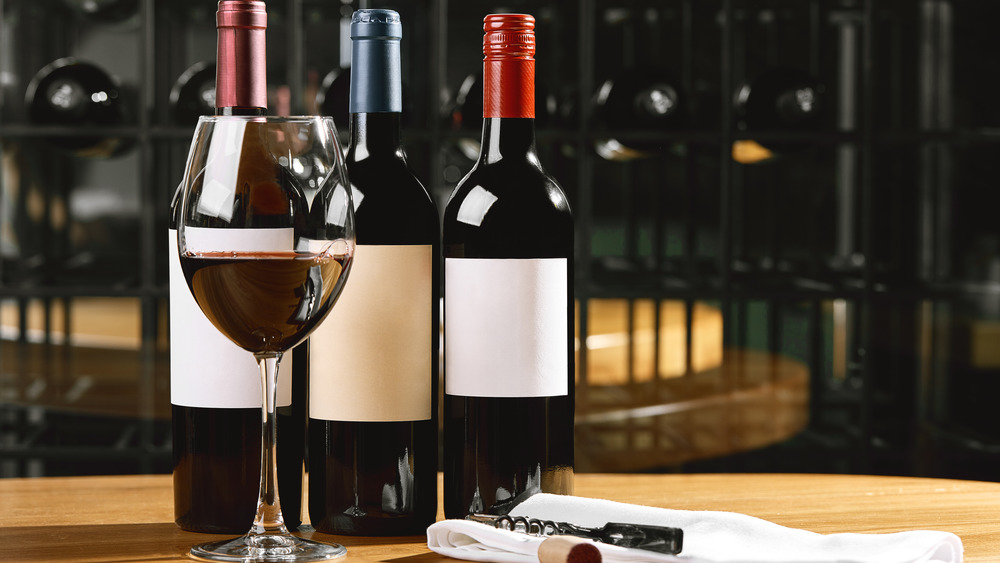This Is The Best Way To Store Red Wine
Whether you prefer pinot noir, Malbec, or Rioja, red wine can be a lovely drink to enjoy. Red wine pairs well with red meat-based dishes and can be made into festive mulled wine (via Food & Wine). You can even cook with it! How you store wine is also important — here's how to make sure your red wine tastes the best it can, whether you're preparing for a dinner party or want to enjoy a glass of Merlot at the end of a night.
The average person is probably under the impression that red wine should stay at room temperature, while white wine and rosé should be chilled. However, that's not necessarily the case. Wine Enthusiast Magazine calls the notion "outdated," and instead vouches for red wine to have a slight chill to it.
If you're confused about how to chill red wine, Wine Enthusiast has you covered. The wine doesn't need to be super cold, which the magazine says leads to "dull" flavors. Rather, it should be between 55 and 65 degrees Fahrenheit. Wine Enthusiast recommends refrigerating lighter-bodied reds for about 90 minutes, and fuller-bodied reds for around 45 minutes.
Different wines respond to different temperatures
The reason that certain wines should be served at certain temperatures isn't just a matter of preference. There's a real science behind it. Wine Enthusiast explains that the wine's "chemical composition" is the main determining factor behind the degree of chilled it should be.
Speaking with VinePair, Certified Sommelier Michael Kennedy also mentions 55 to 60 degrees as the ideal temperature for red wines. Kennedy explains that at this temperature, "the flavors will become focused, the alcohol will not be as evident, and the structure will be tighter." Per VinePair, temperatures above this sweet spot make the wine's alcohol flavor more prominent, and colder temperatures lead to "astringent" flavors coming from the wine's tannins.
Wine Enthusiast explains the type of wine that should be served coldest (between 40 to 50 degrees Fahrenheit) is sparkling wine, as lower temperatures help retain the wine's bubbly carbon dioxide content. Lifehacker notes that sparkling red wines should receive this same treatment — not only will it make the drink taste better, but it'll also lessen your chances of the bottle unpleasantly exploding.

